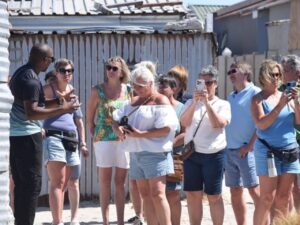As far as blockbuster court cases go, you won’t get much better than the action unfolding over in Brooklyn in the trial of Joaquín “El Chapo” Guzmán.
We have already recounted what happened on day one, with prosecutors going for the jugular right from the start, and on Wednesday, the second day of the trial, the action centred on Jesús Zambada García.
He would be the Sinaloa cartel’s chief accountant for more than 15 years, and he didn’t hold back when exposing the inner workings and massive scale of what is alleged to be the world’s biggest narco-trafficking organisation.
Over to the Guardian:
[He] said his brother, Ismael “El Mayo” Zambada, and Guzman were considered the top leaders of the Sinaloa cartel.
Ismael Zambada, now presumed to be running the organisation, is said by many to be behind a betrayal of Guzmán.
The prosecution called Jesús Zambada García [below] as only its third witness, causing surprise that one of the crucial “snitch” witnesses who have turned state’s evidence had appeared so soon; Zambada was arrested in 2008 on drug trafficking charges, extradited and pleaded guilty.

…Asked repeatedly how he knew what he knew, Zambada replied: “Because I was in the cartel” – at a high level. He said his brother and Guzmán were among the four “leaders”, while he and three others were “sub-leaders”. Below them worked sub-leaders all across Mexico to ensure official cooperation, and “workers”.
These included sicarios whose job was to “kill people”, “drivers” who looked after land transport, “pilots” of “fast boats”, ships and planes, “engineers” who managed encrypted communications, and “security guards” who “provide security for the load [from and to] different locations in the world”.
Zambada spoke at length about massive drug deliveries passing through various ports with government help, whilst El Chapo looked on, at times with disbelief.
You want some staggeringly large numbers? Off we go:
The testimony became most enthralling when Zambada described details of how, for instance, cartel leaders would combine their separate fortunes to invest in shipments of cocaine from Colombia, typically of 30,000kg. Those handled by Zambada usually came from an infamous narco-baron, Juan Carlos Ramírez, aka La Chupeta – since convicted in the US.

Initially, the Sinaloa cartel would split the proceeds from the load 50-50 with their Colombian suppliers (this would change, as the cartel increased its share), and it was Zambada’s job to do the accounts. He explained to the court that five cartel leaders and sub-leaders, including his brother and Guzmán [seen in the sketch above], would each invest in order “to strengthen the cartel” with a bigger shipment, but also because if the load failed to reach its destination, “they lost some capital but not very much”.
Showing that supply and demand are central to the drug trade are the different figures that cocaine raked in, depending on where in the US it ended up:
A shipment to Los Angeles, for instance, would sell at a street value of $20,000 a kilogram, with transport costs of $7,000, so that a load for which the Sinaloans were taking profits on 15,000kg would reap a profit of $13,000 a kilogram – a total of $195m to the cartel and $39m to each of its investors.
For Chicago, the transport cost per kilogram rose to $9,000 a kilogram, but the street price was higher – $25,000 a kilogram – so that “the profits would be $16,000 per kilo, $16m per tonne, at a profit of $48m per investor”.
New York was the prize market, with costs still at $9,000 but a street price of $35,000. “That would produce a profit of $26,000 per kilo,” explained Zambada punctiliously, “which would be $26m per tonne, and that would produce a profit per investor of $78m” – $390m to the cartel in net profit, from a single shipment.
Asked the value of shipments he oversaw during an average year, even Zambada’s astute mental ledger seemed to fail him: “Billions”, he replied. Most of it, he said, came “back to Mexico” to be “invested in other shipments”.
Those are the kinds of numbers that would make even Pablo Escobar smile.
It is also reported that when Zambada left the court, he walked right past his former boss, giving him a nod. El Chapo then raised his eyebrows, and rolled his eyes towards the courtroom ceiling.
I don’t think the two will be exchanging Christmas cards this year.
[source:guardian]





